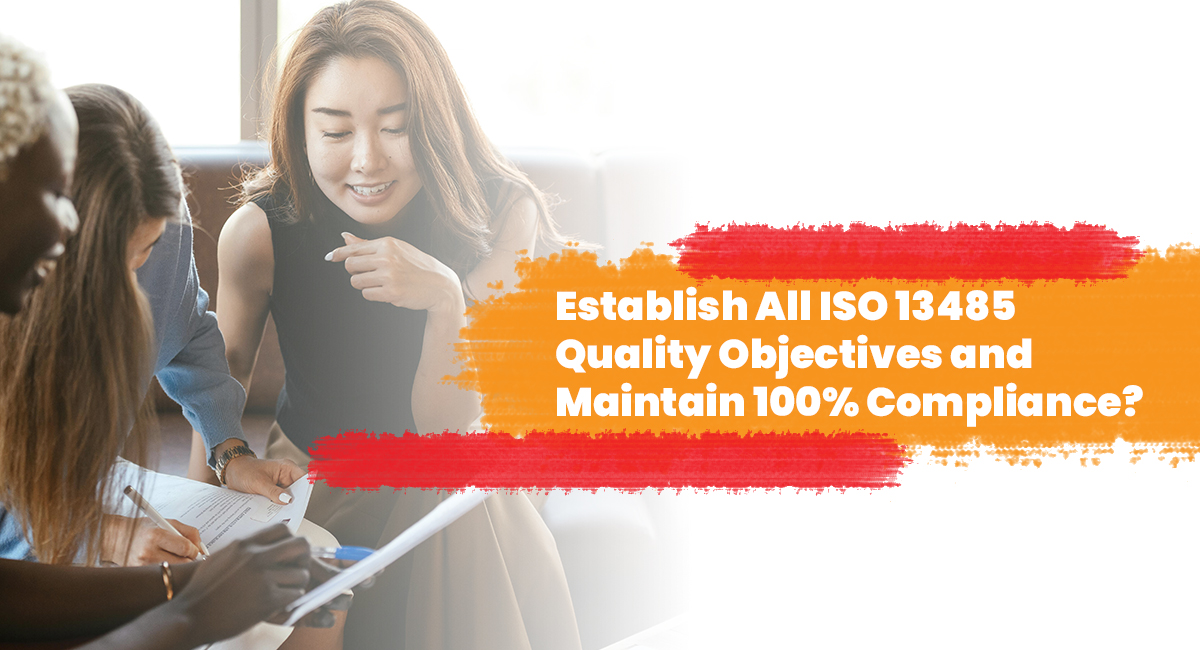
Implementing the ISO 13485 certification will give your management team and stakeholders improved understanding of all quality standards and measurement. The medical device production industry is increasingly competitive. Global exposure can be high and therefore competition is increasing. The ISO standard for quality management will act as a strategic shield that allows companies to meet the demands of their target market as well as maintain a steady revenue margins. The ISO 13485 is the ultimate benchmark internationally that acknowledges devotion and commitment within a medical device company based on what it puts out into the market. This standard requires organizations to establish quality objectives, relevant functions and levels within their organization. The ISO 13485 quality objectives are an essential component of a quality management system, as they help organizations define and measure their performance and improvement efforts. Each objective comes with a set of requirements, which establishes a base for regulatory compliance. If they are not met, the government is most likely going intervene and charge excessive or costly penalties.
The following blog will focus on the predominant objectives and the way a company must establish each of them in order to maintain compliance. Many factors determine the role of these objectives in maintaining expected efficiency of within the standard. First, comprehending these clauses will set your objectives and then every aspect that directly influence those same objectives.
What are the fundamental clauses of the ISO 13485?
• The scope of a quality management standard is necessary. There should be clear specifications for your system’s applicability in terms of design, production, development/installation, and after-sale servicing.
• The normative references are relevant to the nature of your system.
• Key terms and conditions of your quality management system.
• General requirements for implementing and documenting a quality management system program.
• Your management’s responsibility encompasses the following: commitment of all management personnel, customer centric, a stringent quality policy, and holistic planning.
• Resource management includes factors like provisioning of resources, human resources, infrastructure, and your work environment.
• The product realisation clause includes factors like planning product realisation, a process for customer handling, design, development, purchasing, production provision, service provision, and monitoring/measuring.
• Measurement and improvement through monitoring of previously implemented methods, identification, control of nonconforming products, data analysis, and timely improvement.
These clauses set the basic groundwork for these same objectives. The following aspects are the key elements.
• Consistent with Requirements: Quality objectives should be consistent with applicable regulatory requirements and your organization’s commitment to meeting customer, all applicable statutory and regulatory requirements.
• Time-Bound: Establish a timeframe for achieving each objective. This helps in monitoring progress and ensuring that efforts are focused and timely.
• Review and Revision: Periodically review and, if necessary, revise your quality objectives to ensure they remain relevant and aligned to your organization’s strategic direction.
• Relevance to the role of the quality management system (QMS): The management team must ensure that all objectives align to your overall objectives and purpose of the company’s individual QMS.
• They should be measurable: The management team must ensure that each objective is measurable. There should be a clear framework for evaluating and determining whether the ultimate result has been accomplished or not.
• The objectives must be realistic: The management team must decide if each objective is realistic and can be completed in a timely manner. There should be an estimated timeline for completing each objective.
• Proper communication: The management team must communicate their objectives, set forth clear expectations for its employees and other stakeholders.
• They should be data-driven: They must check the efficiency of each process, and the management must rely on the data generated when monitoring results.
Some of the common ISO 13485 objectives are:
• Enhanced customer satisfaction through rapid reduction in product defects
• Zero non-conformities
• Reduction in resource wastage
• Timely delivery of medical devices
• Increase in monthly and yearly sales
• Enhanced competence through training and workshops
To locate professional support for implementing an ISO quality management system, meeting standards and conducting all internal audit requirement, contact us at Compliancehelp. We are a premier firm that can assist you in obtaining any ISO certification in Australia. Our bespoke solutions for ISO and other global certifications are ready to make this process which normally seems exhausting and transforms it in a comfortable and timely one. From basic consultation to audit and analysis, we will cover everything. Hire us and rid yourself of any concern or question regarding the clauses of any management system standard you require. Click here to learn more about the ISO 13485 quality objectives.

Get connected with us on social networks!